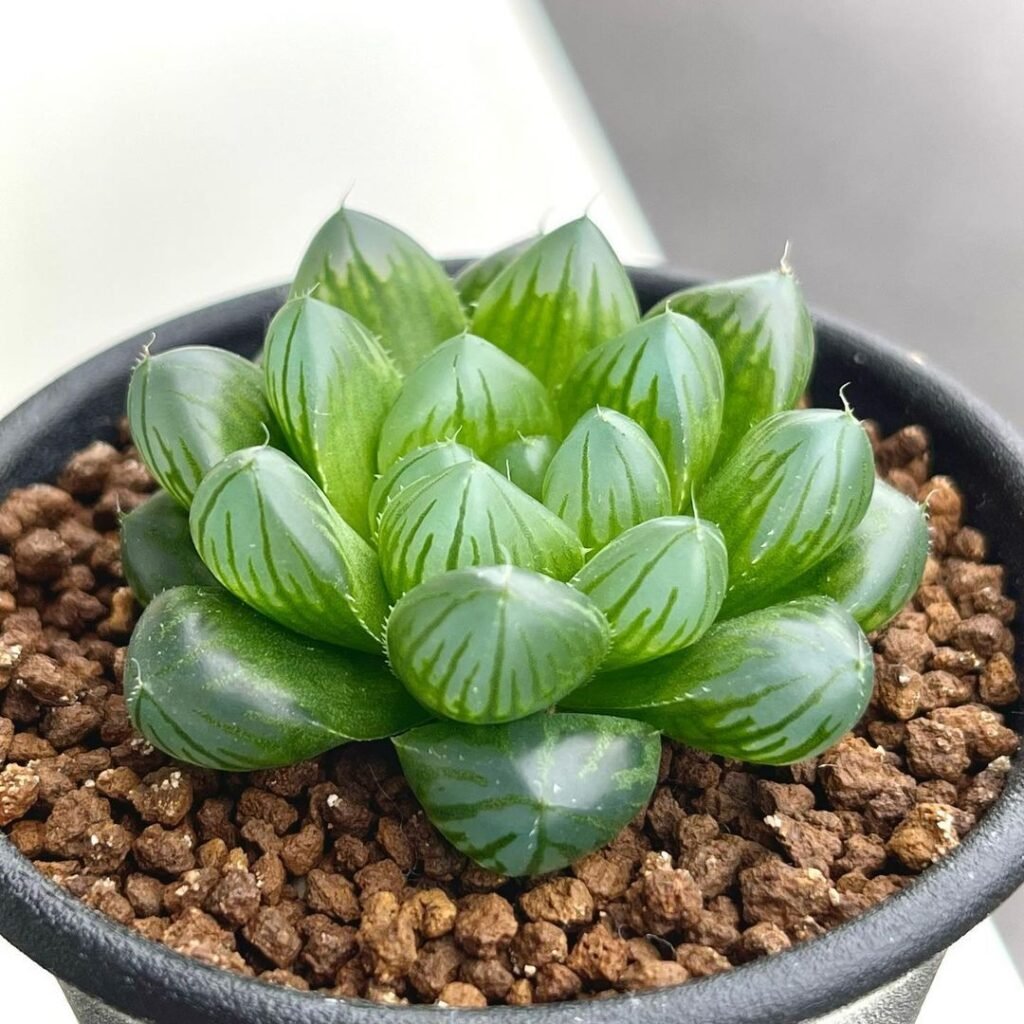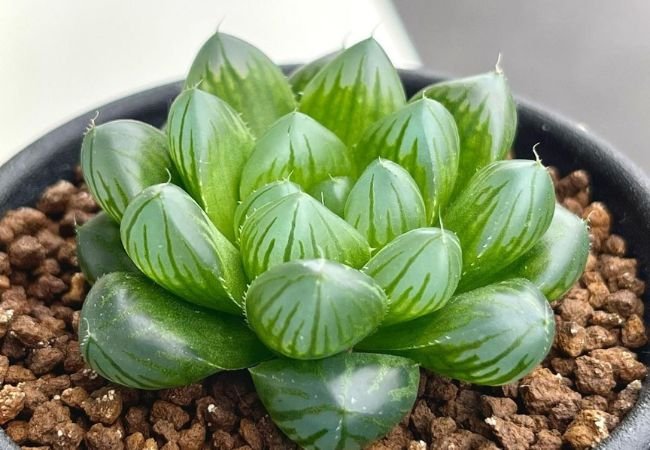The Haworthia cooperi is a small, rosette-forming succulent known for its plump, translucent leaves that resemble tiny “windows”. Native to South Africa, it thrives in bright, indirect light and well-draining soil. This low-maintenance plant is ideal for indoor cultivation and is popular among succulent collectors for its unique appearance.
As a succulent specialist with over a decade of experience, I’m excited to share my knowledge about the captivating Haworthia cooperi. This comprehensive guide will help you successfully grow and care for this charming “window plant” in your home or garden.
Introduction to Haworthia cooperi

Botanical Information
- Scientific Name: Haworthia cooperi
- Family: Asphodelaceae
- Origin: Eastern Cape Province, South Africa
Characteristics
- Growth Habit: Compact rosettes
- Size: Typically 2-3 inches (5-7.5 cm) in diameter
- Leaves: Fleshy, translucent, often with pointed tips
- Flowers: Small, white, tubular flowers on thin stems (rarely seen in cultivation)
For more detailed botanical information, visit the World of Succulents Haworthia cooperi page.
Varieties of Haworthia cooperi
Several varieties exist, each with slightly different leaf shapes or patterns:
- H. cooperi var. cooperi: The typical form
- H. cooperi var. truncata: Leaves with flattened tips
- H. cooperi var. pilifera: Leaves with hair-like tips
- H. cooperi var. venusta: Smaller, more compact form
Growing Conditions for Haworthia cooperi
Light Requirements
- Bright, indirect light is ideal
- Can tolerate some direct morning sun
- Avoid harsh afternoon sun, which can scorch leaves
Temperature and Humidity
- Prefers temperatures between 65-80°F (18-27°C)
- Can tolerate brief periods of cooler temperatures
- Average room humidity is sufficient
Soil and Potting
- Well-draining succulent or cactus mix
- Add perlite or coarse sand for extra drainage
- Use a pot with drainage holes to prevent water logging
For a DIY succulent soil mix recipe, check out the University of California Cooperative Extension guide.
Caring for Your Haworthia cooperi
Watering
Proper watering is crucial for Haworthia cooperi:
- Allow soil to dry completely between waterings
- Water thoroughly when soil is dry, then allow excess to drain
- Reduce watering in winter during dormancy
Fertilizing
- Use a balanced, water-soluble fertilizer diluted to half strength
- Apply every 4-6 weeks during the growing season (spring and summer)
- Do not fertilize in winter
Repotting
- Repot every 2-3 years or when the plant outgrows its container
- Best done in spring at the beginning of the growing season
- Use a pot only slightly larger than the current one
Propagation Methods
Haworthia cooperi can be propagated through:
- Offsets (pups)
- Leaf cuttings
- Seeds (less common)
Propagating from Offsets
- Gently remove offsets from the mother plant
- Allow the cut to callus for a day or two
- Plant in well-draining succulent soil
- Keep slightly moist until roots develop
For more detailed propagation techniques, visit the Succulent Plant Care guide on Haworthia propagation.
Common Issues and Troubleshooting
Overwatering
Symptoms:
- Soft, mushy leaves
- Yellowing or translucent leaves
- Root rot
Solution:
- Reduce watering frequency
- Ensure proper drainage
- If severe, unpot, remove rotted parts, and repot in fresh soil
Pests
Common pests include mealybugs and spider mites:
- Isolate affected plants
- Treat with neem oil or insecticidal soap
- For severe infestations, use systemic insecticides
Etiolation (Stretching)
Caused by insufficient light:
- Gradually move the plant to a brighter location
- Consider using grow lights if natural light is limited
Displaying Your Haworthia cooperi
These compact succulents are perfect for:
- Small desktop gardens
- Terrariums (ensure proper ventilation)
- Mixed succulent arrangements
- Windowsill displays
Conservation Status
While Haworthia cooperi is not currently listed as endangered, wild populations face threats from habitat loss and over-collection. Always purchase from reputable sources that propagate their own plants.
For more information on succulent conservation, visit the International Union for Conservation of Nature (IUCN) Succulent Plant Specialist Group.
The plump Haworthia cooperi is a delightful succulent that offers a unique visual appeal with its translucent, window-like leaves. Its compact size and relatively easy care requirements make it an excellent choice for both beginners and experienced succulent enthusiasts. By providing the right balance of light, water, and well-draining soil, you can enjoy the beauty of this charming South African native for years to come.
Remember, patience is key when growing Haworthia cooperi. These succulents grow slowly, but their distinctive appearance and low-maintenance nature make them well worth the wait. Whether you’re adding to your succulent collection or starting your first plant, the Haworthia cooperi is sure to be a captivating addition to your indoor garden.
For more information on succulent care and cultivation, visit the Cactus and Succulent Society of America.
For more gardening tips and plant care guides, visit usagardenhub.com.






